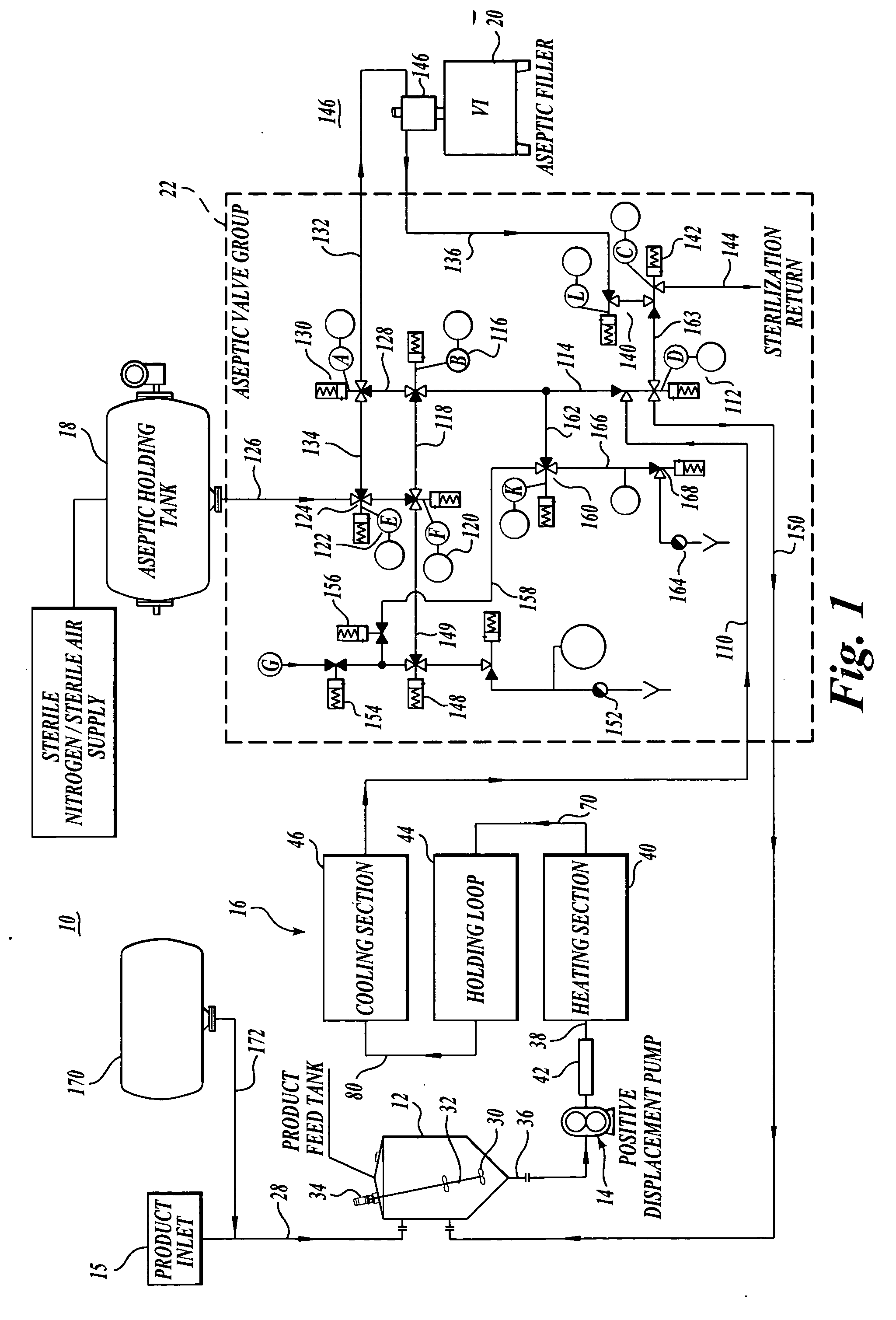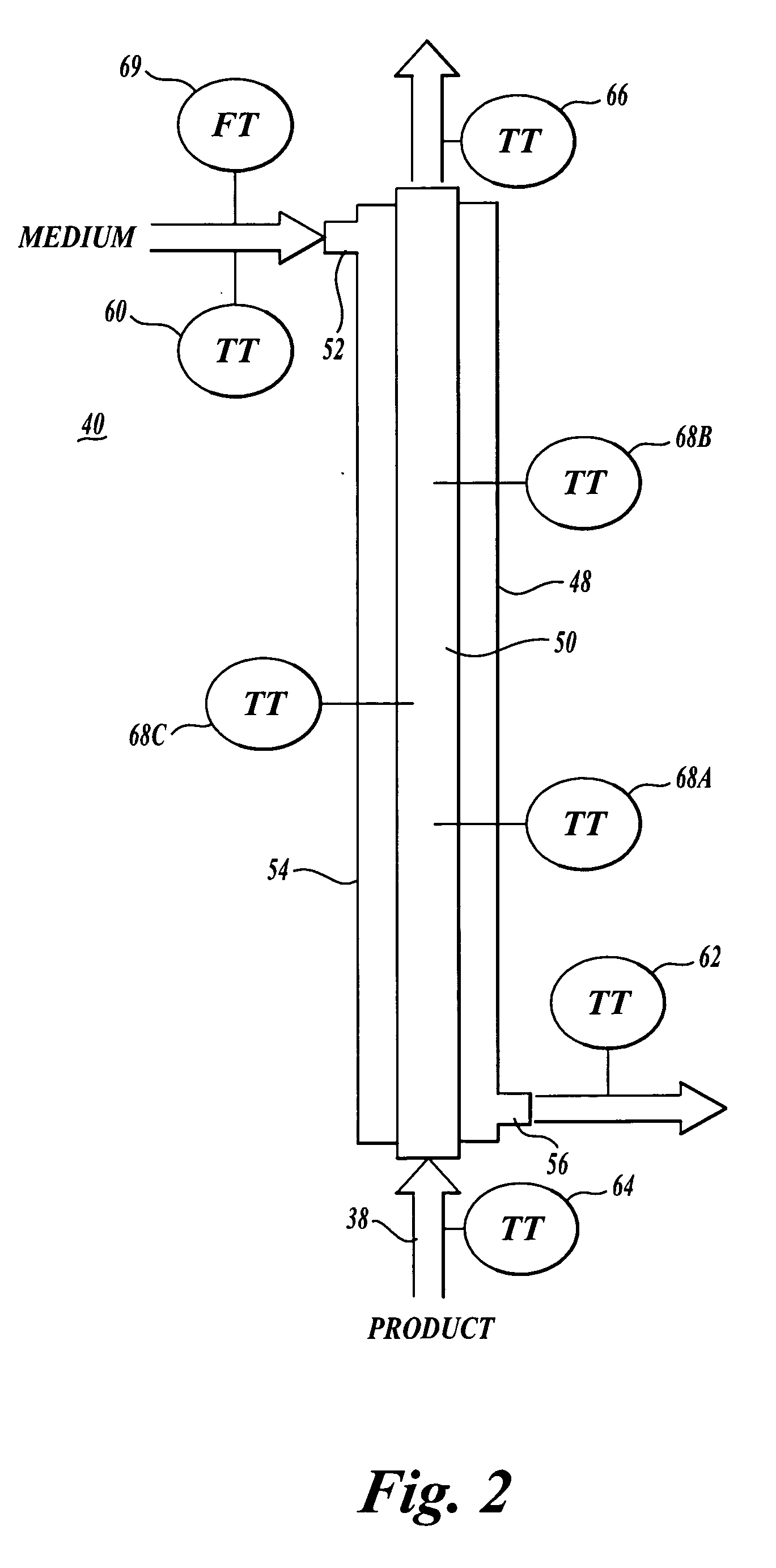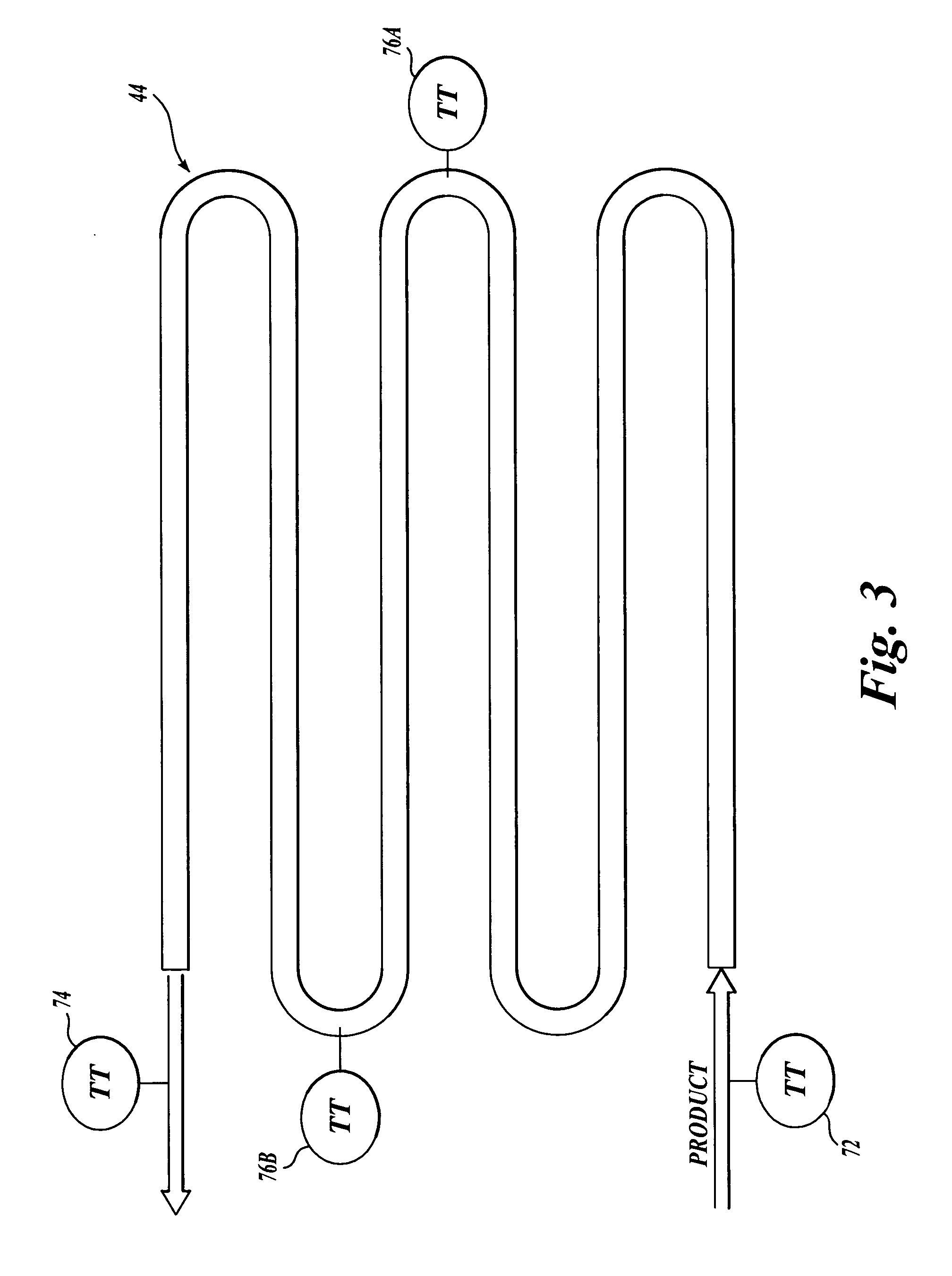Aseptic processing system and method
a technology of aseptic processing and aseptic liquid, applied in the direction of food science, food science, material testing goods, etc., can solve the problems of food product degradation, large storage space for empty cans, and laborious processing
- Summary
- Abstract
- Description
- Claims
- Application Information
AI Technical Summary
Benefits of technology
Problems solved by technology
Method used
Image
Examples
Embodiment Construction
The aseptic processing system and method of the present invention includes determining the lethality delivered by the system, which in turn requires a mathematical model of the system taking into consideration the heat transfer to the food product through operation of the aseptic system of the present invention. The mathematical model is used to set process parameters for the aseptic system of the present invention, including product physical properties such as “worst case” particle size and its geometry, particle thermal conductivity, specific heat and density, particle / liquid heat transfer coefficient, particle fraction, fastest moving particle residence time etc and process parameters such as initial product temperature, process temperatures, flow rates of the food product as well as flow rates of the heating and cooling media. Other process parameters for the aseptic system of the present invention include the temperatures of the heating and cooling media. The aseptic system of...
PUM
| Property | Measurement | Unit |
|---|---|---|
| physical characteristics | aaaaa | aaaaa |
| temperature | aaaaa | aaaaa |
| heat transfer rates | aaaaa | aaaaa |
Abstract
Description
Claims
Application Information
 Login to View More
Login to View More - R&D
- Intellectual Property
- Life Sciences
- Materials
- Tech Scout
- Unparalleled Data Quality
- Higher Quality Content
- 60% Fewer Hallucinations
Browse by: Latest US Patents, China's latest patents, Technical Efficacy Thesaurus, Application Domain, Technology Topic, Popular Technical Reports.
© 2025 PatSnap. All rights reserved.Legal|Privacy policy|Modern Slavery Act Transparency Statement|Sitemap|About US| Contact US: help@patsnap.com



